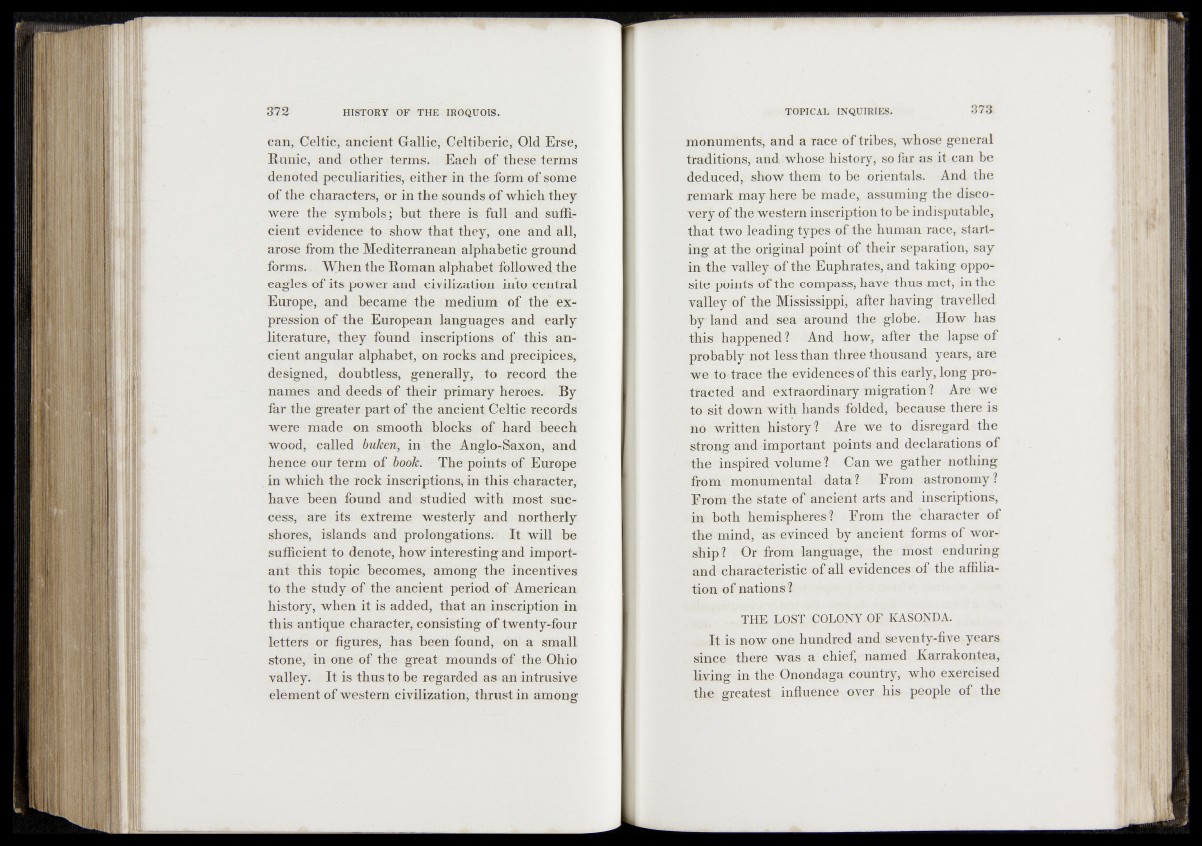
can, Celtic, ancient Gallic, Celfiberie, Old Erse,
Runic, and other terms. Each of these terms
denoted peculiarities; either in the form of some
of the characters, or in the sounds of which they
were the symbols; but there is. full and sufficient
evidence to show that they, one and fill,
arose from the Mediterranean alphabetic ground
forms, M^hen the Roman alphabet followed the
eagles, of its power and civilization into central
Europe, and became the medium of the' expression
of the European languages and early
literature, they found inscriptions of this ancient
angular alphabet, on rocks and precipices,
designed, doubtless, generally, to record the
names and deeds of their primary heroes.- By
far the greater part of the ancient Celtic records
were made on smooth blocks of hard beech
wood, called buken, in the Anglo-Saxon, and
hence our term of book. The points of Europe
in which the rock inscriptions, in this character,
have been found and studied with most success,
are its extreme westerly and northerly
shores, islands and prolongations:’ It will be
sufficient to denote, how interesting and important
this topic becomes, among the incentives
to the study of the ancient period of American
history, when it is added, that an inscription in
this antique character, consisting of twenty-four
letters or figures, has been found, on a small
stone, in one of the great mounds of the Ohio
valley. It is thus to be regarded as an intrusive
element of western civilization, thrust in among
monuments, and a race of tribes, whose general
traditio^, and ïwhose historyj so far as it can be
deduced c .show them to be orientals. And the
remark may here be made; assuming the discovery
of the we stern inscription to he indisputable,
that two leading typés of the human race, starting
at the original point Of their'separation, say
in the valley of the Euphrates, and taki ng- opposite
points Of the compass, have thus met, in the
valley of the Mississippi, after having travelled
hf:te»d and scfi around the globe. How has
this happened ? - And how, after the lapse of
probably not less than three thousand years, are
we to- trace- the evidences of this early, long protracted
and extraordinary m ^ Are we
to-sit down with hands folded, because there is
no written history?, Are we to disregard-the
strong and important points and declarations of
the inspired volume ? | Can we gather nothing
from, monumental- data? From astronomy?
From the state of ancient arts and inscriptions,
in both hiimisphetés^l Fronf i*hol:Character of
the mind) as evinced by ancient forms of worship
? Or from language, the most enduring
and characteristic of all evidences of the affiliation
of nations ?;
T H E L O S t COL 0KŸ.ÆE KASONDA.
. It is now one hundred and seventy-five .years
since there was a chief- named Karrakontea,
living in the Onondaga country, who exercised
thfi; greatest infiuehee -over, his people of the